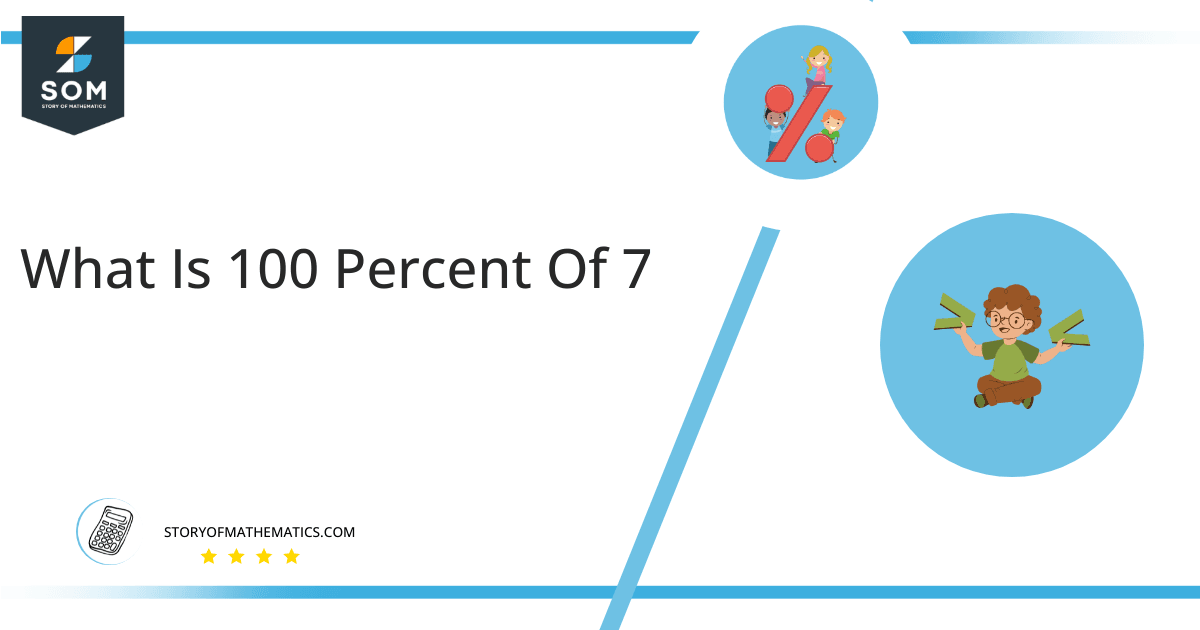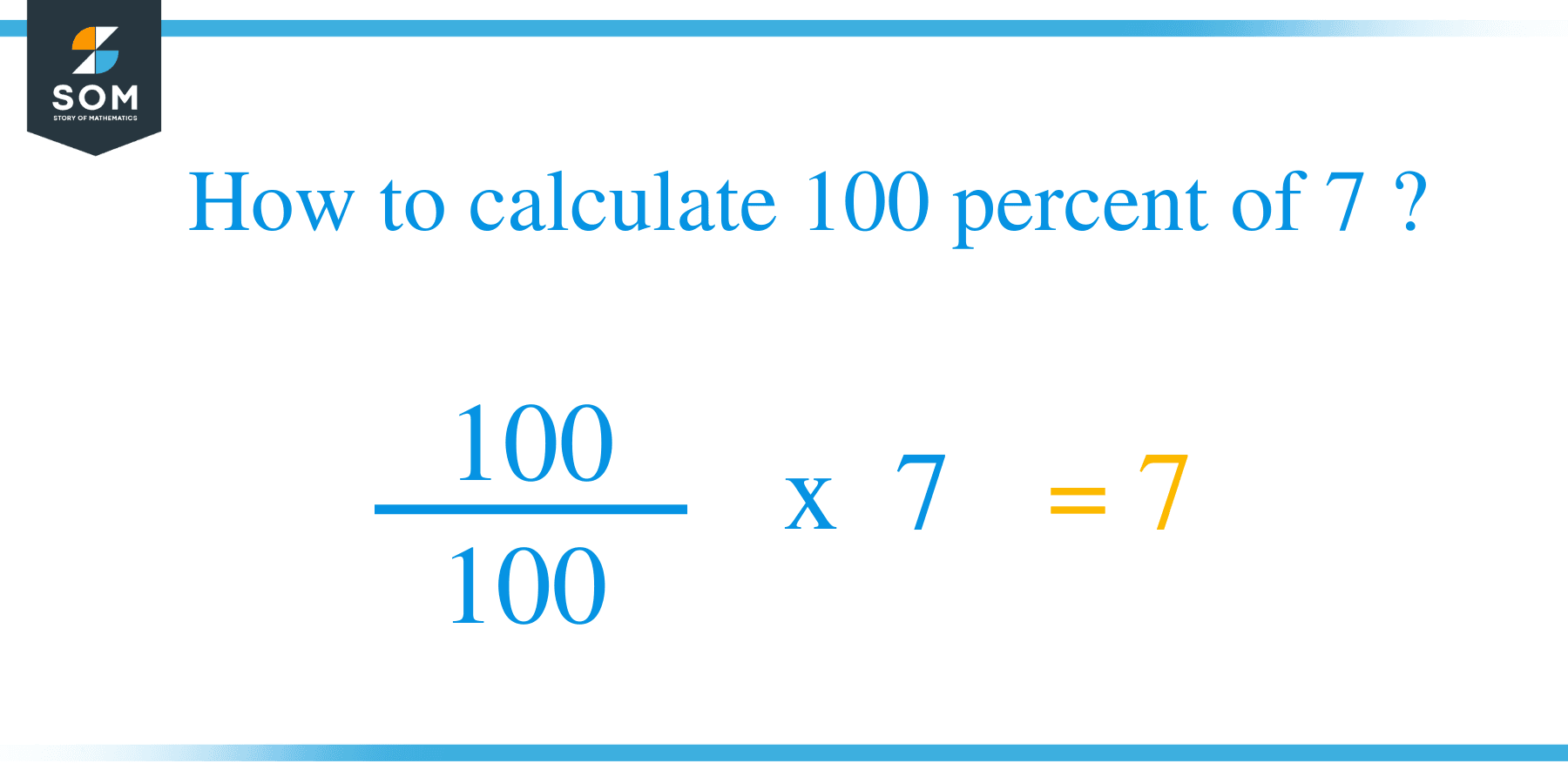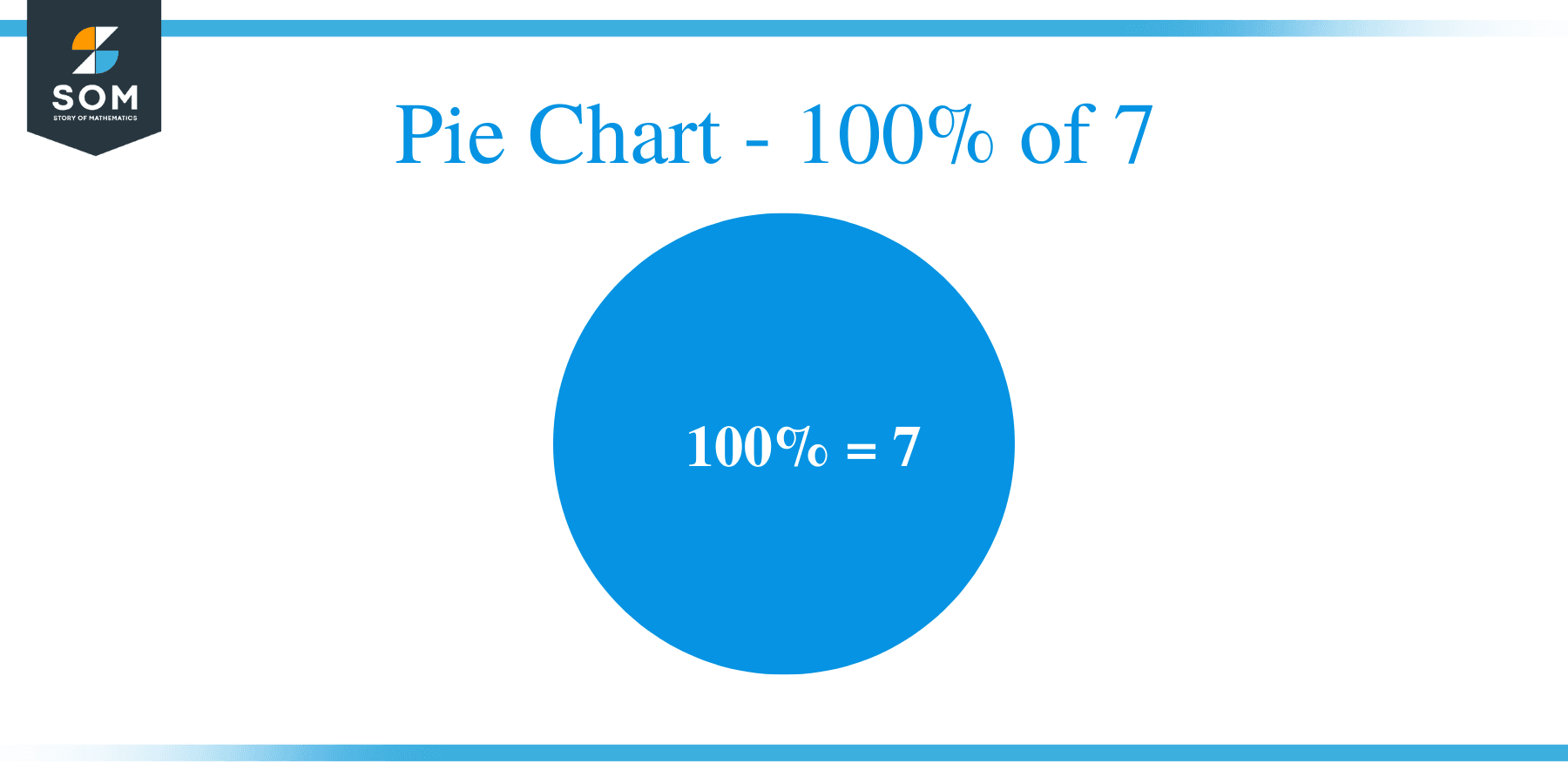JUMP TO TOPIC
What Is 100 Percent of 7 + Solution with Free Steps

100 percent of 7 equals 7. This solution can be obtained by multiplying the factor 1.00 with 7.
The calculation of 100 percent of 7 may be useful for someone in multiple applications. To get a better understanding of its application, let us consider an example. Suppose that you were entitled to some discount by a particular restaurant. However, there is one item worth 7 dollars on the menu that is not covered by the entitlement policy. In this case the menu may read that you have to pay 100 percent of 7 dollars. Now if you would know that you actually have to pay 7 dollars, then it would save you a lot of arguments later on when you pay the bill.
Many more applications can be related to this problem other than the above restaurant example where you may need to calculate 100 percent of 7. Whatever your application of the expression 100 percent of 7 may be, we have outlined a step-by-step solution to calculating 100 percent of 7 which is explained below.
What Is 100 percent of 7?
100% of 7 is equivalent to 7. This solution may be calculated by multiplying the fraction 1.00 and numeral 7.
Another method that can be used to calculate the same solution would be to multiply the fraction 100/100 with the numeral 7. This would result in the same output of 7 which is the required answer.
How To Calculate 100 percent of 7?
You can find 100 percent of 7 by some simple mathematical steps explained below.

Step 1
Writing 100 percent of 7 in mathematical form:
100 percent of 7 = 100% x 7
Step 2
Substitute the % symbol with the fraction 1/100:
100 percent of 7 = ( 100 x 1/100 ) x 7
Step 3
Rearranging the above equation gives:
100 percent of 7 = ( 100 x 7 ) / 100
Step 4
Multiplying 100 with 7:
100 percent of 7 = ( 700 ) / 100
Step 5
Dividing 700 by 100:
100 percent of 7 = 7
Therefore, the 100 percent of 7 is equivalent to 7
We can visualize that 100 percent of 7 is equal to 7 by using the following pie chart.

Figure 1
The green region in the above figure shows 100 percent of the whole 7, which equals 7 in absolute terms. The total area of the pie chart represents 7, while the orange area represents the remaining portion of 7, which is equal to 0 in absolute terms so there is no orange region.
The percentage is a technique in which we normalize the given physical quantity on a scale of 0 to 100. For example, if we have a value of a certain physical quantity equal to 35 and the maximum possible value can be 100, then 35 can be written as 35 percent of the total value.
In mathematics, the percentage is often used to compare two or more quantities on different scales. For example, if we say that 35 percent of people will consume 35 percent of resources. They sound more relatable, but we can see that the absolute numbers may be vastly different.
All the Mathematical drawings/images are created using GeoGebra.
